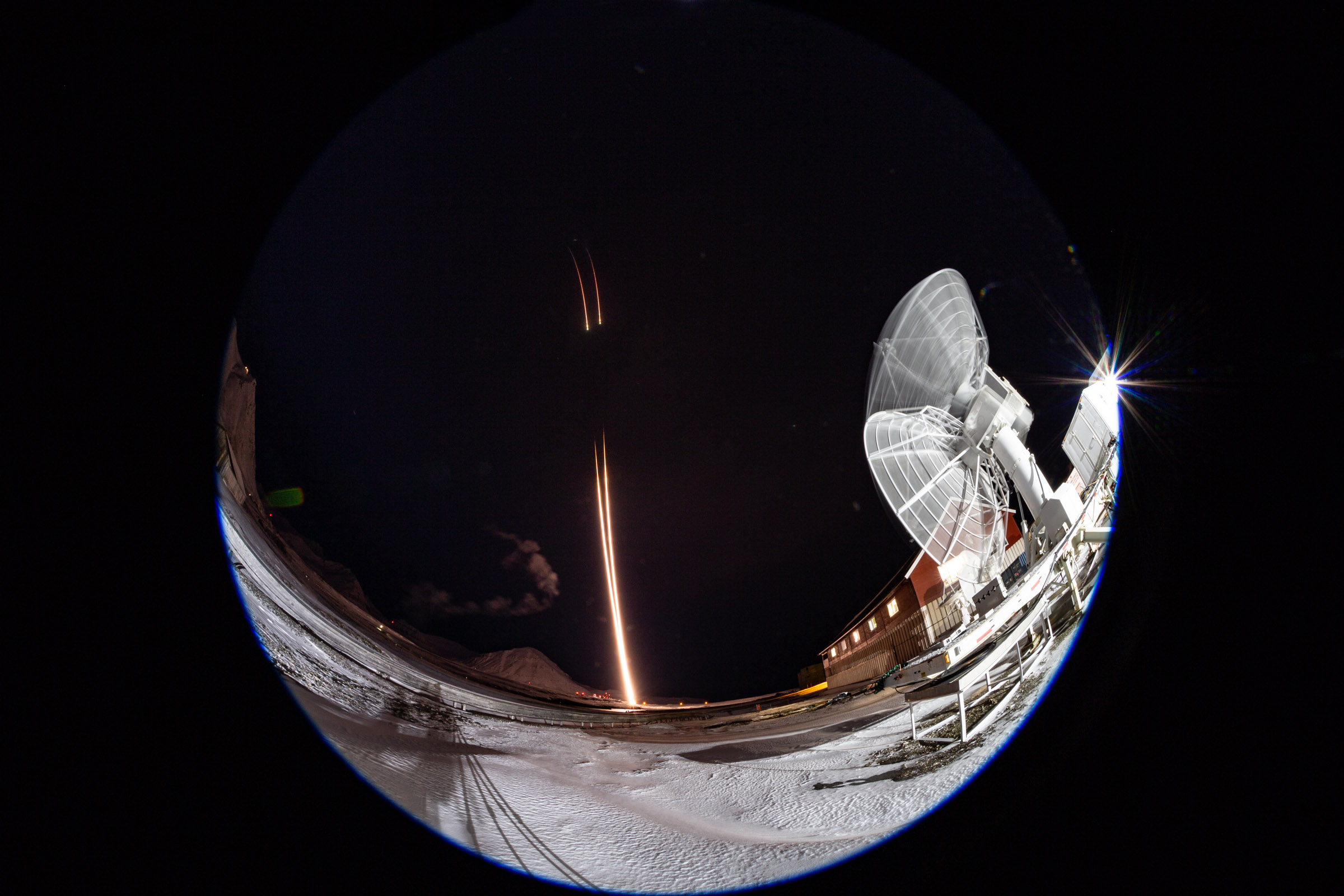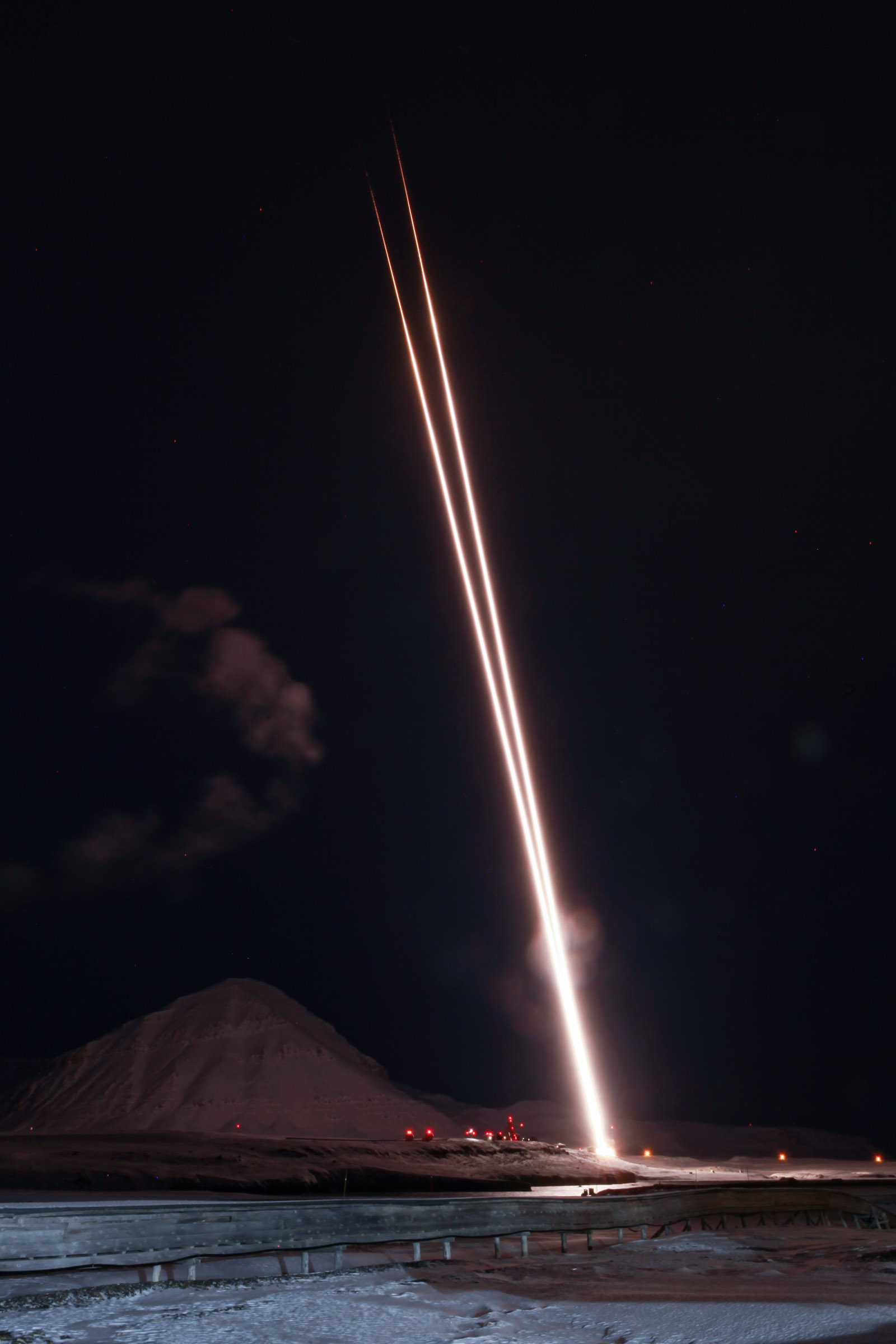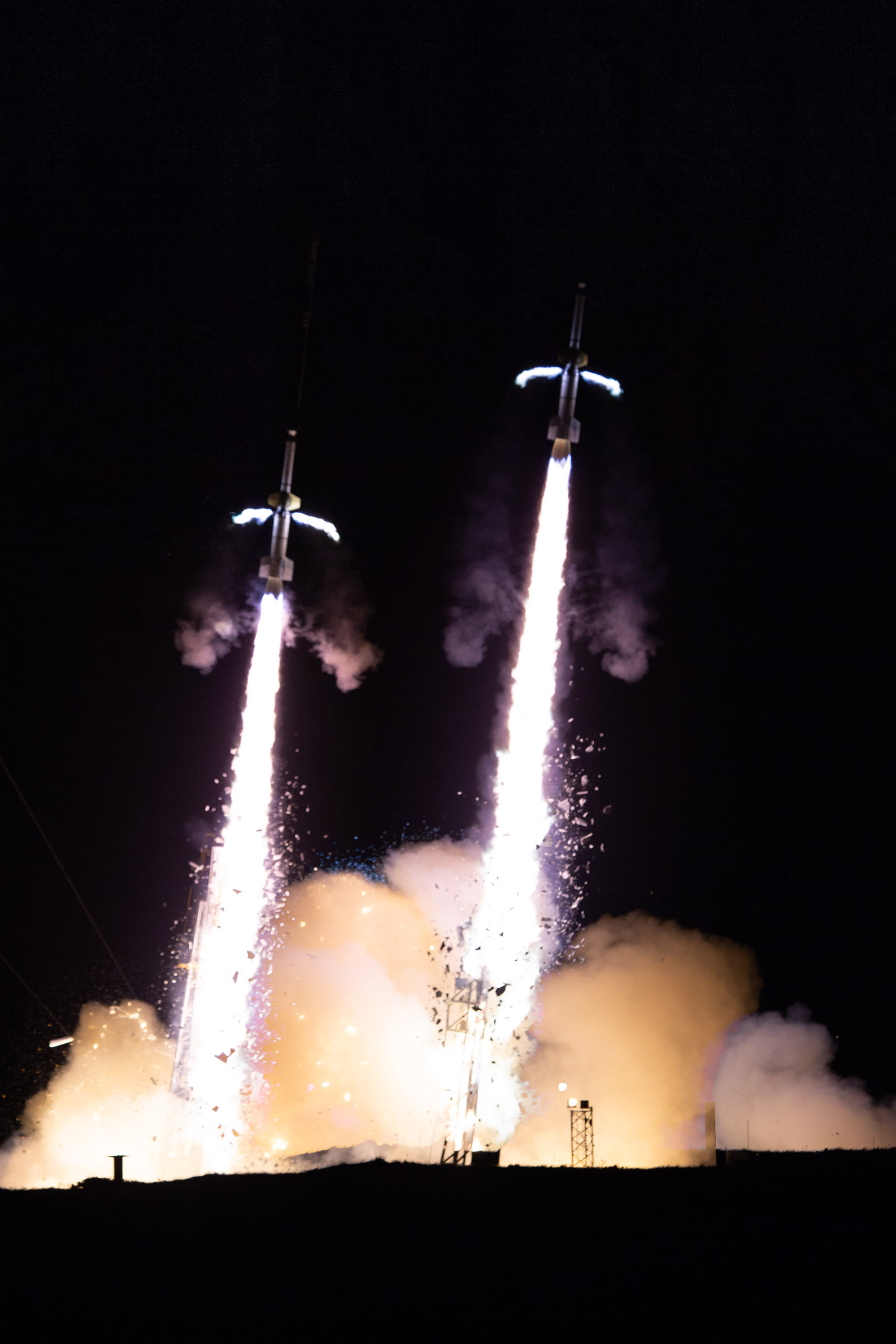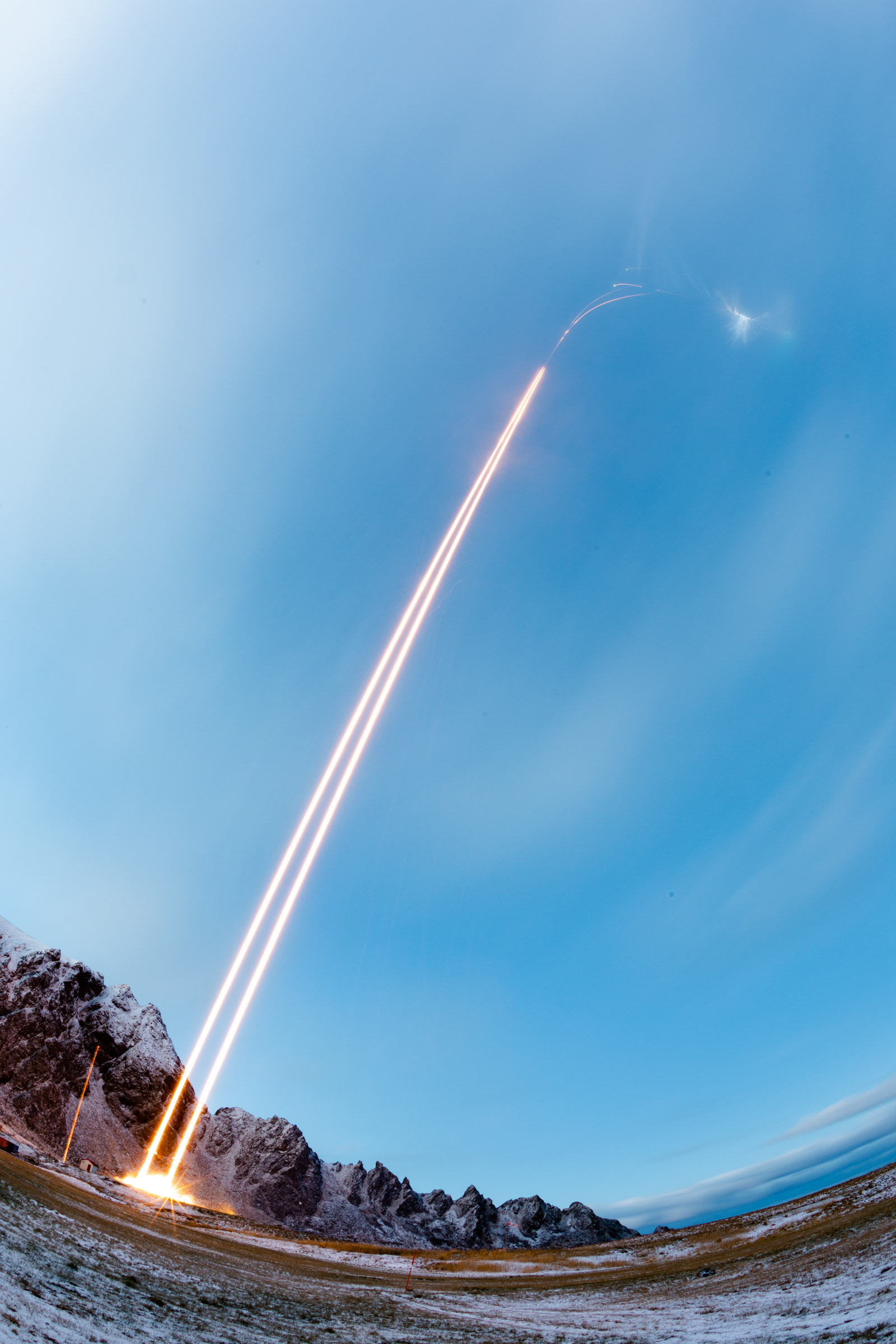These NASA Rocket Launches to Study Earth's Atmosphere Are Just Gorgeous (Photos)

NASA launched several small rockets in December 2018, resulting in gorgeous nighttime launch photos and promising interesting insight into the makeup of particles coming and going from Earth's atmosphere.
The first two launches, VISIONS-2, happened Dec. 7 in Ny-Ålesund, Svalbard, in Norway at 6:06 and 6:08 a.m. EST (1106 and 1108 GMT), respectively. A time-lapse photo from the launch shows the two Black Brant X rockets as they leave the launchpad, with mountains of snow and clear skies in the backdrop. Another photo from the launch shows one of the two rockets breaking through its protective foam box as it takes off.
VISIONS-2 stands for Visualizing Ion Outflow via Neutral Atom Sensing-2 rockets. The rockets were launched to investigate atmospheric escape, which is the name given to the rate Earth's atmosphere slowly leaks into space, according to a statement from NASA. To map oxygen outflow from the aurora, VISIONS-2 flew two rockets into the northern polar cusp, one of two regions where the solar wind — charged particles streaming away from the sun — have a direct access to the Earth's ionosphere. This kind of data can help scientists with such mysteries as which planets might be habitable and how Mars became so barren, NASA officials said.

The Dec. 7 launch was just the first in a series of nine sounding-rocket missions launching over the next 14 months as part of GCI - Cusp, the first Grand Challenge Initiative project. The GCI is an international collaboration to study Earth and space science, andGCI – Cusp aims to understand how charged particles interact in the geomagnetic cusps.
The second set of rocket launches in the series, the TRICE-2 rockets, happened Dec. 8 at the Andoya Space Center in Andenes, Norway, at 3:26 and 3:28 a.m. EST, respectively. NASA released a beautiful time-lapse photo of these rockets launching over the Norwegian sea, with twin, bright-orange tails from the launch site. Motors firing on the sides of the first stages spin the rockets to help them stay stable during flight.

As part of GCI – Cusp, the TRICE-2 (Twin Rockets to Investigate Cusp Electrodynamics) rockets were launched to explore magnetic reconnection, which is the process that allows charged particles from space to come into Earth's atmosphere, according to a NASA statement. So while VISIONS-2 measured particles leaving Earth's atmosphere, TRICE-2 measured particles streaming in. Missions like this should help scientists better understand when Earth's protective magnetic shield will become more porous and let more outside particles through the barrier.
The next two missions in the GCI will launch from Dartmouth College in New Hampshire between Jan. 1 and 14, 2019.
Get the Space.com Newsletter
Breaking space news, the latest updates on rocket launches, skywatching events and more!

Follow Kasandra Brabaw on Twitter @KassieBrabaw. Follow us @Spacedotcom, Facebook and Google+. Original article on Space.com.
Join our Space Forums to keep talking space on the latest missions, night sky and more! And if you have a news tip, correction or comment, let us know at: community@space.com.

Kasandra Brabaw is a freelance science writer who covers space, health, and psychology. She's been writing for Space.com since 2014, covering NASA events, sci-fi entertainment, and space news. In addition to Space.com, Kasandra has written for Prevention, Women's Health, SELF, and other health publications. She has also worked with academics to edit books written for popular audiences.









